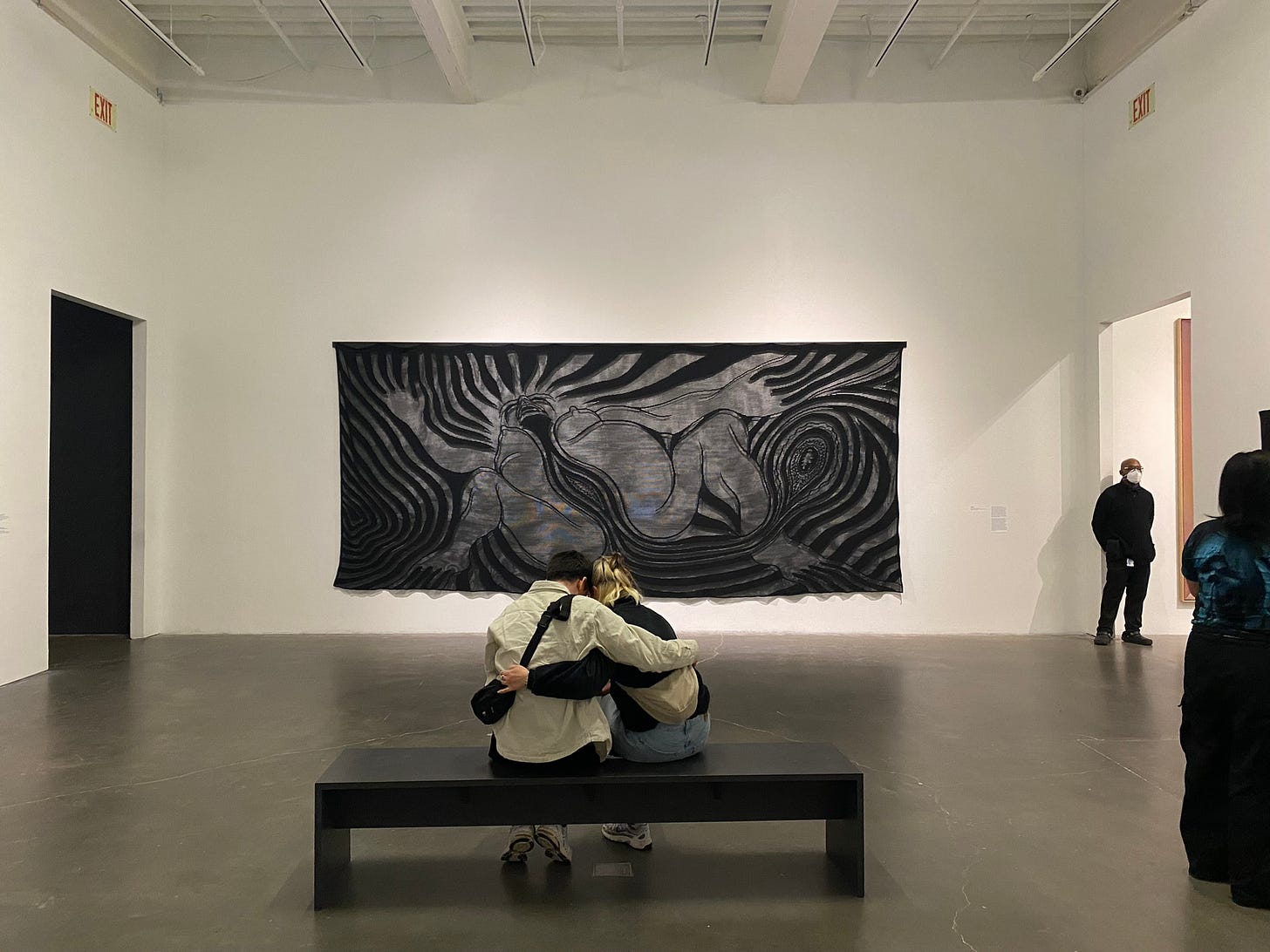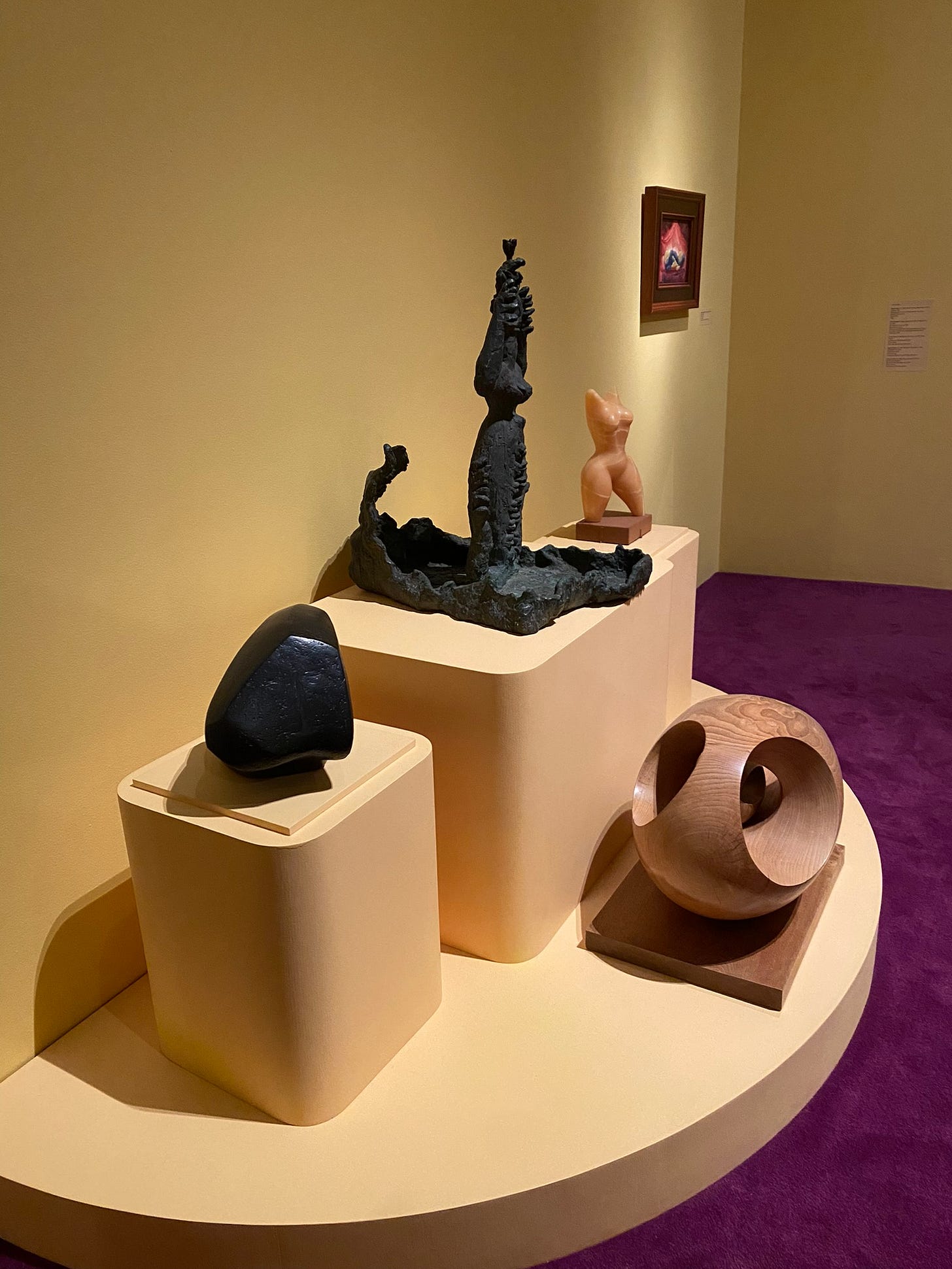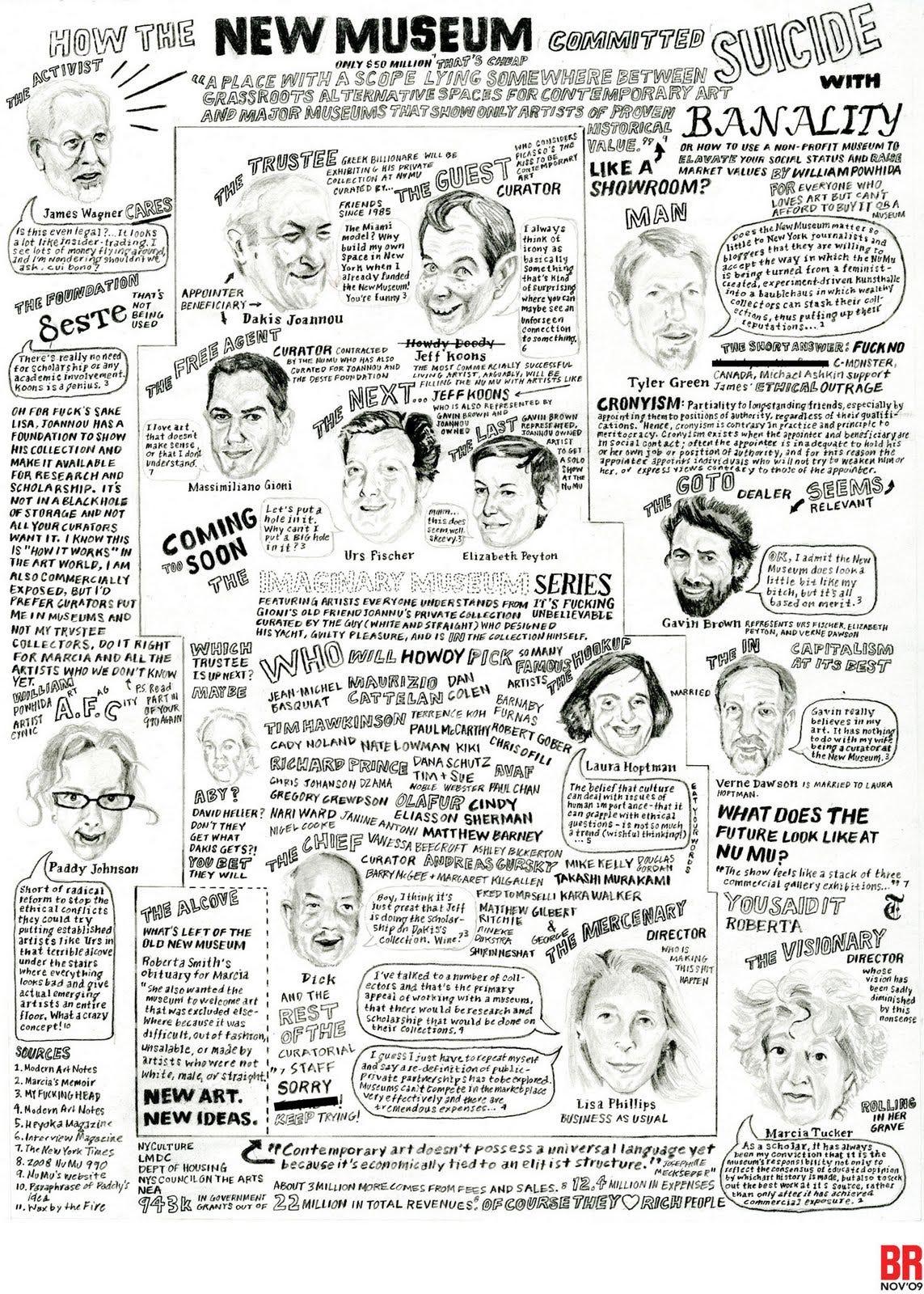I wrote this up late at night; please excuse the typos.
Couples usually abound at the New Museum on Thursday evenings, but, when I went this week with a friend, we found it rather empty, a little spooky. Was Judy Chicago’s Herstory exhibition really such a date-night killer?
Plenty has been written about how out-of-touch first-wave feminism feels in Chicago’s exhibition so I won’t touch on it here, other than to say that I’m a f*cking historian so that’s a moot point for me: it’s irresponsible to only view what’s compatible with our own ethics. That’s how echo chambers get started. Still, I couldn’t stop laughing when I overheard someone describe a well-intentioned video bashing hetero-sex as being “like a Portlandia sketch.” If you remember that all emotions are allowed by art—whether laughter, pain, or confusion—you’ll be able to make it through much of the exhibition.
We started out on the top floor. Here was City of Ladies, a purple-carpeted room curated by Chicago with art by women that was mostly about women, too.
Some of the choices were heavy-handed, with artist couplings overly reliant upon the (mostly) CIS-gendered female form and stereotypically feminine color combinations in pink and soft pastels. Thank Goddess, then, for the Puppies Puppies (Jade Guanaro Kuriki-Olivo) installation on the first level that was awash in green; whether or not the artist knew that she would be paired with Chicago, the choice of green was a necessary counterpoint to so much pink and peachy skin. (Side thought: Shouldn’t there have been more green in the Ladies room, if fertility gets associated with nature?)
The next floor down was a spiral of airbrushed death, united by personal fears and the representation of collective trauma featuring the Holocaust.
Then, taking the stairs again, we reached the second floor, which was actually the beginning of the exhibition. We should have started there—alas, the NuMu rarely ever mentions which floor to visit first. This was the formative years room, the actual start to the exhibition, that showed Chicago’s transition from pastel primary structures to sassy smoke-bomb “ladies.” I’m glad to have seen the technical know-how Chicago acquired to construct a more atmospheric form of land art than some of her peers, and a sharp-as-a-knife ability with airbrush painting to rival anyone associated with the West Coast Finish Fetish crew.
And then, in less than an hour, the exhibition was over. How were three rooms full, and yet, it felt like there still wasn’t enough work or context to give Chicago a full retrospective?
I don’t miss the Carsten Höller extravaganza days of the NuMu circa 2010, but this exhibition felt seriously underdeveloped, as if it had been curated by a Judy Chicago fan club. The exhibition lacked a critical context for the artist within the greater milieu of global feminisms, socialist demands for women’s labor in the ERA and Thatcher years, or any crossovers with gay and lesbian activism. Including these histories and, really, any sense of criticality, could have helped to clarify Chicago’s place in art. But it didn’t—it was ahistorical, which is a complaint I wish I didn’t have to lodge at a museum.
The more things change, children, the more things stay…banal.





